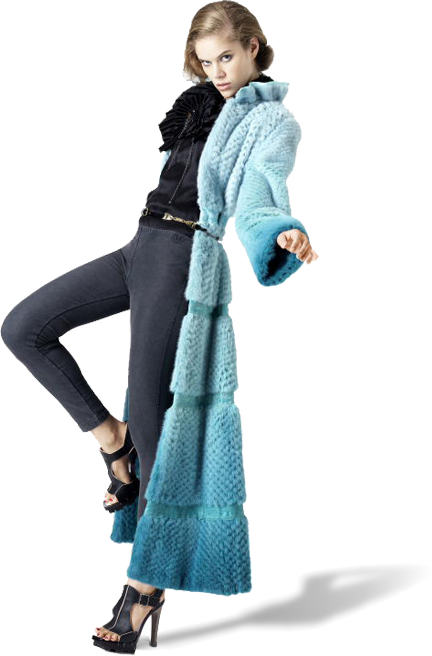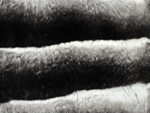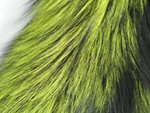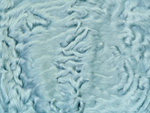
Fur Tips
Fur Care
Nowadays, the vast majority of furs in the global market are from North America, Russia, Scandinavia, China, etc, with over 90% come from fur farms, and the remaining from wild animals.
To ensure the best quality of fur, all fur farmers are very concern about the animal welfare. The modern fur farms are well managed, each farmer takes good care of the animals by providing good nutrition and excellent living environment. In addition, animal hunting is strictly controlled by governments in various countries. All hunters must obtain a valid license and there are restrictions on the species and quantity of hunting, so as to ensure that the wild animals are maintained at certain level and also keeping the ecology in balance.
There are many types of fur, here are some popular varieties:
Farmed furs and their scientific name
-
Chinchilla

Chinchilla Lanigera
Originated in South America but now totally protected in the wild. It is farmed in North and South America and Europe. Very soft and silky with mainly grey, some black, white or beige-white natural colours. Used mainly for small articles and trimming but also for full length garments.
-
Silver Fox

Vulpes Vulpes
Today Finland is the world's largest producer of farmed foxes. Silver fox has long, glossy, lightweight fur with natural colours in black and white, giving a feel of silver. Darker skins have more black and paler skins more white. Traditionally used for collars and cuffs, wraps and stoles.
-
Karakul Lamb

Ovis Aries
One of the oldest breeds of domesticated sheep in the world. Also known as Persian lamb and Astrakhan. Pelt is distinctive for softness and lustrous wavy curls. Natural colours are black, grey, white, silver grey, pink and brown. Typically used for full fur garments such as coats and skirts, and as trimming, edging and lining.
-
Mink

Muslela Vison
Denmark is the world's largest producer of farmed mink. This is the most common farmed species, producing dense, lightweight fur. Wide range of natural colours from white to black, taking in pearl, violet and sapphire, demi-buff (medium brown) and "ranch" (very dark brown). The fur can be worked in many ways, including shorn, knitted and also dyed in many different colours. Used for coats, jackets and trimmings.
-
Sable
Martes Zibellina
Wild fur bearer found only in Russia, sable is the most expensive fur, highly valued for its rarity, lush dark colour and deep, silky pelt. Ranges in colour from dark brown (almost black) through brown to pale yellow / golden. Also farmed to a small extent. Used for garments, trimming and small pieces such as stoles.
Selected 5 types of wild furs and their scientific names:
-
North American Beaver
Castor Canadensis
Large, semi-aquatic, wild animal from North America. Long guard hairs are very dark brown to reddish or "blonde". Often plucked or sheared by designers to show soft underfur and reduce weight. Used for trimmings and full fur garments.
-
Musquash
Ondatra Zibethica
Semi-aquatic mammal which is very prolific. Found wild throughout North America and Europe, the former Soviet Union and China. Thick, waterproof underfur with long, glossy overlayer of guard hairs. Colour varies from light brown to black. Often used for coats, jackets and trimmings.
-
Nutria
Myocastor Coypus
Large, semi-aquatic rodent, mainly found in Argentina and southern USA (Louisiana). It is also farmed in Poland and the Czech Republic. Typically dense, grayish underfur and long glossy guard hair. Varies in colour from dark brown to yellowish brown. Used either long-haired or plucked for garments and trim.
-
Raccoon
Procyon Lotor
This wild furbearer is abundant throughout the USA and southern Canada. Raccoons from northern areas are more highly furred. Long-haired fur with grey and black markings. Mainly used for trimmings including collars and cuffs.
-
North American Squirrel
Tamiasciurus Hudsonicus
Wild fur valued for its soft, reddish pelt. Typically used for linings, garments and some trimmings.

